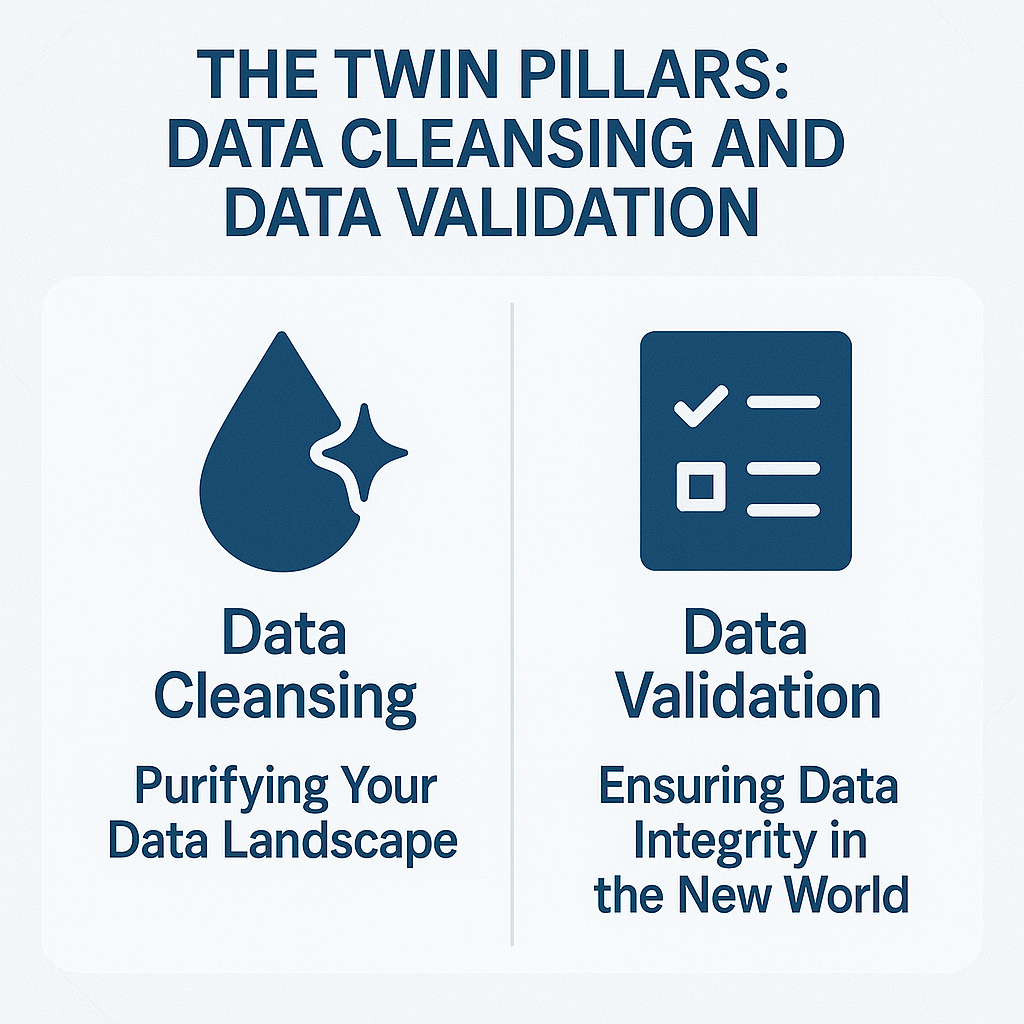
The digital transformation journey for many enterprises often culminates in migrating their mission-critical ERP systems to the cloud. Among the most significant shifts is moving from on-premise solutions like Oracle EBS R12 to the agile and scalable Oracle Fusion Cloud Migration. This transition, while promising immense benefits in terms of agility, cost-efficiency, and innovation, is fraught with challenges, particularly concerning data. The success of any ERP migration hinges critically on the quality of the data transferred. This is where the often-underestimated, yet paramount, roles of data cleansing and data validation come into play.
Imagine building a magnificent skyscraper on a shaky foundation. It's bound to collapse. Similarly, migrating years of operational data, often accumulated across various systems and processes, without proper preparation, is a recipe for disaster. Corrupt, incomplete, or inconsistent data can lead to erroneous reports, faulty transactions, operational disruptions, and ultimately, a failure to realize the promised benefits of the Oracle Fusion Cloud Migration.
The importance of data quality cannot be overstated in an ERP data migration. It's not merely about moving data from one database to another; it's about ensuring the integrity, accuracy, and completeness of the information that will drive your business processes in the new cloud environment.

Figure 1: The Twin Pillars: Data Cleansing and Data Validation
Data cleansing and data validation are two distinct, yet interconnected, processes that form the backbone of a successful data migration strategy.
Data cleansing, also known as data scrubbing or data purification, is the process of detecting and correcting (or removing) corrupt, inaccurate, incorrectly formatted, duplicate, or incomplete records from a record set, table, or database. In the context of an Oracle EBS migration, this involves meticulously examining historical data for inconsistencies that may have accumulated over the years of operation.
Consider the common scenarios in Oracle EBS R12:
The Data Cleansing Process typically involves:
The benefits of rigorous data cleansing are manifold. It reduces the volume of data to be migrated, minimizes errors post-migration, improves system performance in Oracle Fusion, and ensures better reporting and analytics capabilities. It is a critical aspect of legacy data cleanup.
While data cleansing focuses on the source data, data validation ensures that the cleansed data conforms to the rules and constraints of the target system, in this case, Oracle Fusion Cloud. It's about confirming that the data is not only clean but also fit for purpose in the new environment.
Data validation in Oracle Fusion is crucial because the architecture, data models, and business rules within Oracle Fusion Cloud may differ significantly from Oracle EBS R12. For example:
The Data Validation Process typically involves:
The synergy between data cleansing and data validation is undeniable. Cleansing makes the data ready for migration, and validation ensures it functions correctly within the new system.
Central to both cleansing and validation, and indeed the entire migration process, is data mapping and transformation. This involves defining how data elements from the source (Oracle EBS R12) will correspond to data elements in the target (Oracle Fusion Cloud). Often, this isn't a one-to-one mapping. Data may need to be:
For example, a single address field in EBS might need to be split into street, city, state, and zip code fields in Fusion. Or, different product categorization schemes in EBS might need to be mapped to a standardized category hierarchy in Fusion.
This process often highlights areas where further data cleansing is required or where new data validation rules need to be defined.
Performing data cleansing and validation manually for a large-scale Oracle EBS to Oracle Fusion Cloud Migration is an arduous, error-prone, and time-consuming task. This is where migration automation tools and specialized utilities become invaluable.

Figure 2: Data Migration Project
These tools help streamline the process, improve accuracy, and provide auditing capabilities, which are crucial for data quality assurance.
While the technical aspects of data cleansing and validation are critical, the success of your Oracle Fusion migration also depends on strategic and organizational alignment:
The journey from Oracle EBS R12 to Oracle Fusion Cloud Migration is more than just a technological upgrade; it's a profound business transformation. The quality of your data is the bedrock upon which this transformation is built. By investing adequately in data cleansing and data validation, organizations can mitigate significant risks, accelerate their migration timelines, and ultimately unlock the full potential of their new Oracle Cloud ERP environment.
Neglecting these crucial steps can lead to spiraling costs, project delays, and a system riddled with inaccuracies, undermining the very purpose of moving to the cloud. Therefore, a strategic, well-planned approach to data quality, leveraging appropriate tools and involving key stakeholders, is not just recommended, but absolutely essential for a successful, high-fidelity Oracle Fusion Cloud Migration.
FAQ on data cleansing and validation in Oracle EBS to Fusion Cloud migration:
1. Why are data cleansing and validation so critical for Oracle Fusion Cloud Migration?
Data cleansing removes inaccuracies, duplicates, and inconsistencies from your existing Oracle EBS data, ensuring a clean foundation. Data validation then verifies that this prepared data adheres to the rules and structures of Oracle Fusion Cloud. Without these steps, you risk migrating faulty information, leading to operational errors, unreliable reporting, and a failed migration that negates the benefits of the new system.
2. What are the main types of data issues addressed by data cleansing?
Data cleansing tackles problems like duplicate records (e.g., the same customer entered multiple times), incomplete data (missing addresses or contact details), inconsistent formatting (varying date formats or spellings), outdated information (inactive accounts), and invalid values (data outside acceptable ranges). Addressing these ensures a high-quality dataset for your Oracle Fusion Cloud Migration.
3. How does data validation differ from data cleansing in this migration context?
Data cleansing fixes issues in your source data. Data validation, on the other hand, confirms that the cleansed data meets the specific requirements of the target Oracle Fusion Cloud environment. This includes checking data types, lengths, referential integrity (relationships between data), and compliance with Fusion's business rules and data models. It's the final quality check before go-live.
4. Can we automate data cleansing and validation during the migration?
Yes, automation is highly recommended and often essential for large-scale migrations. ETL tools for Oracle (Extract, Transform, Load), like Oracle Data Integrator, along with specialized data quality tools and custom scripts, can automate the identification, correction, transformation, and validation of data. This significantly reduces manual effort, improves accuracy, and speeds up the Oracle EBS migration process.
5. What is the role of master data management in this migration process?
Master data management is crucial because it ensures that core business entities like customers, suppliers, and items are consistently defined and accurate across the organization. During the migration, master data needs rigorous cleansing and validation, as transactional data relies heavily on its integrity. A well-managed master data set simplifies data mapping and transformation and ensures smooth operations in Oracle Fusion Cloud.